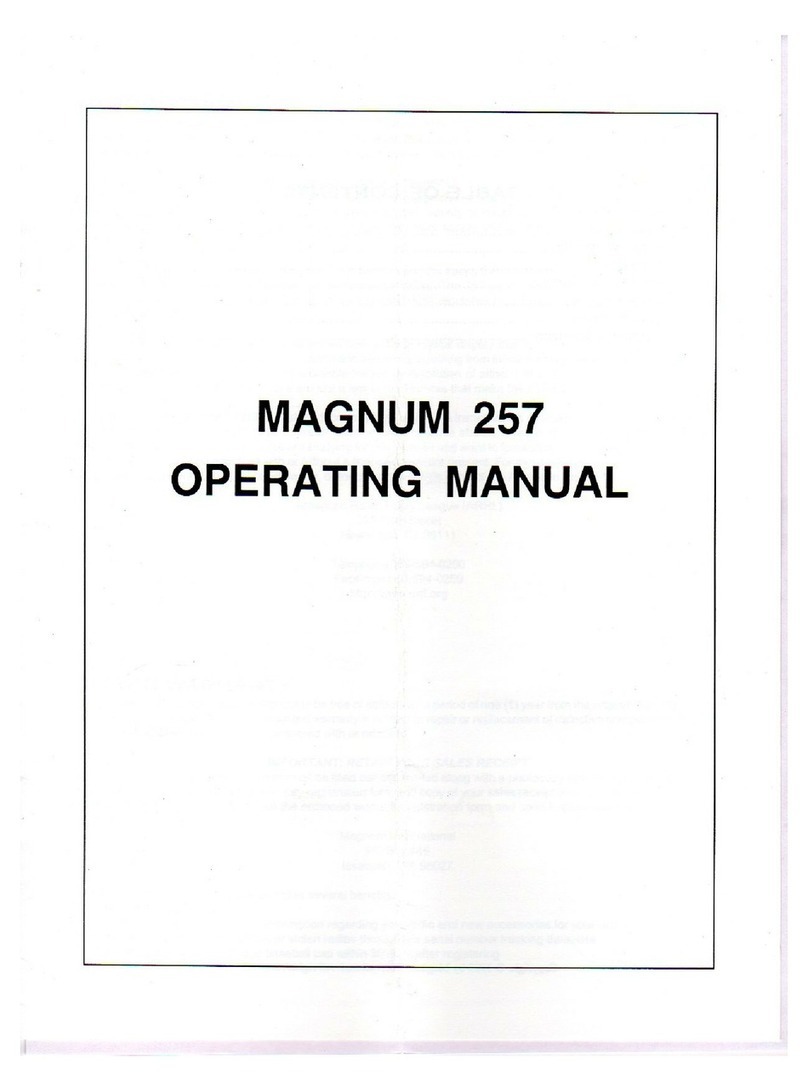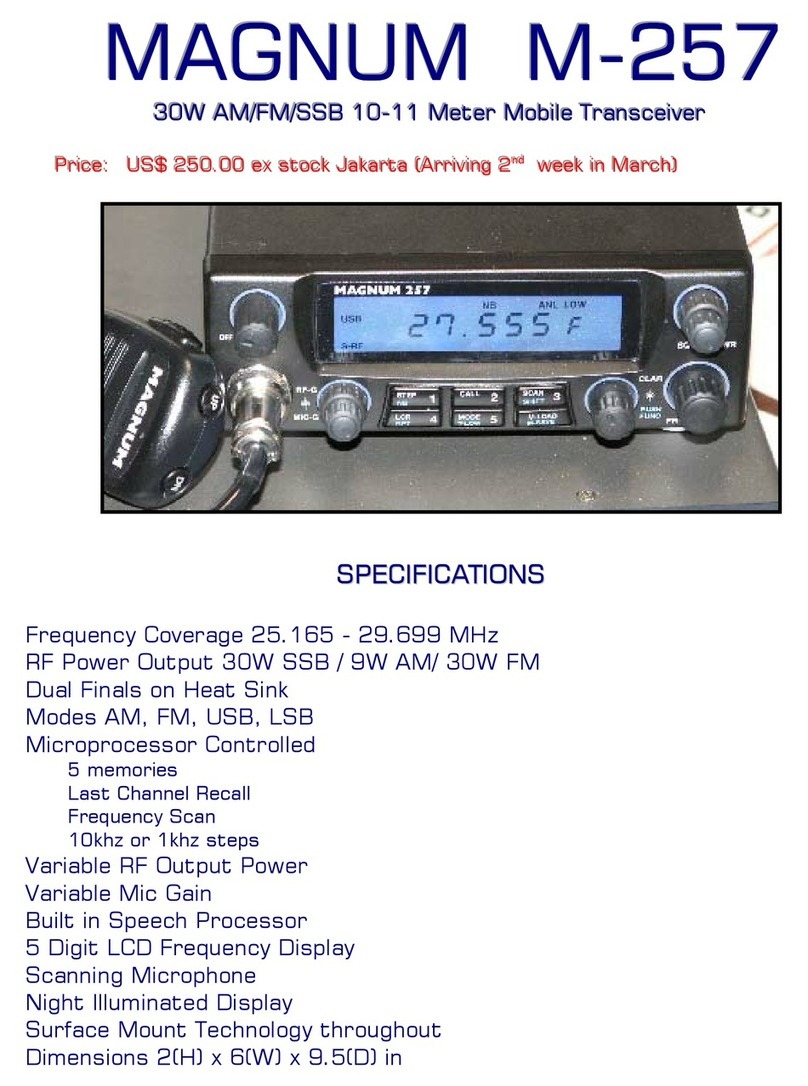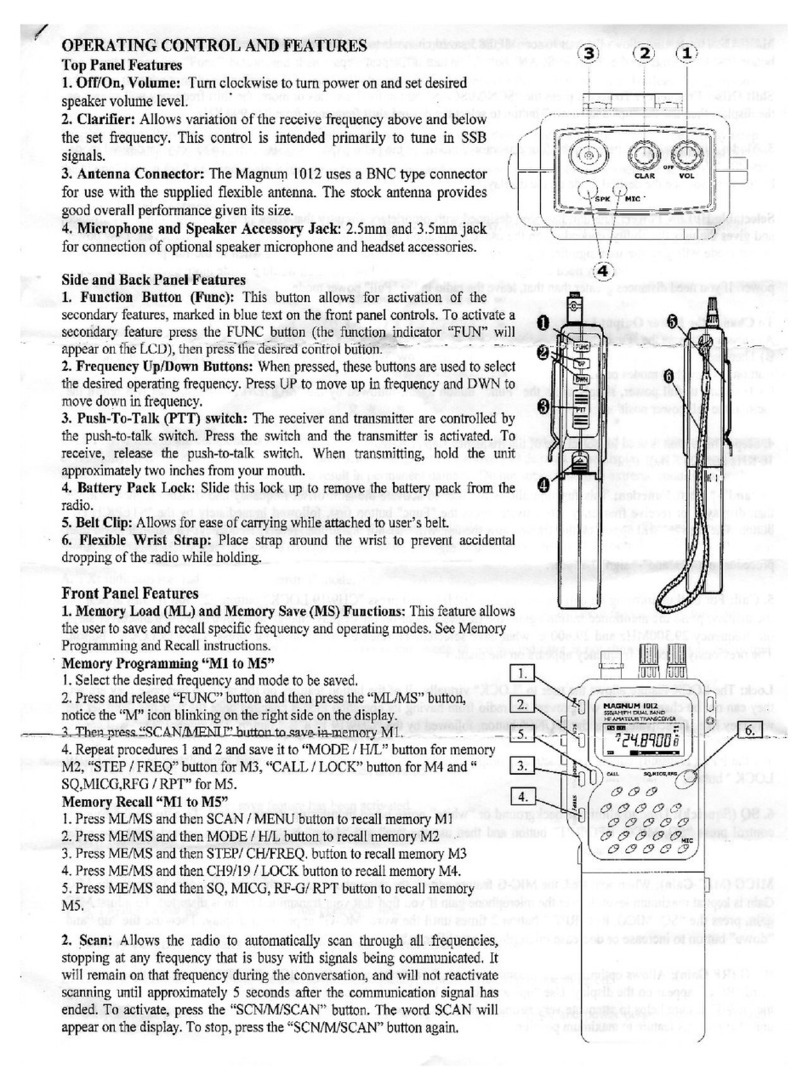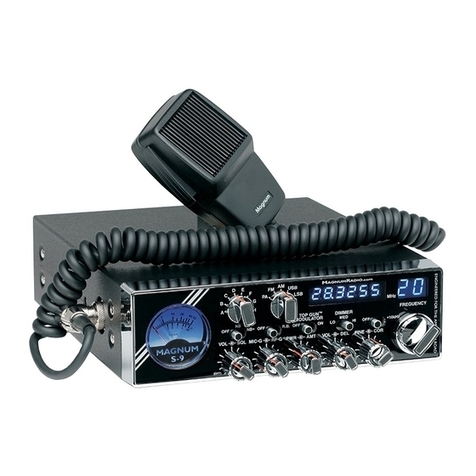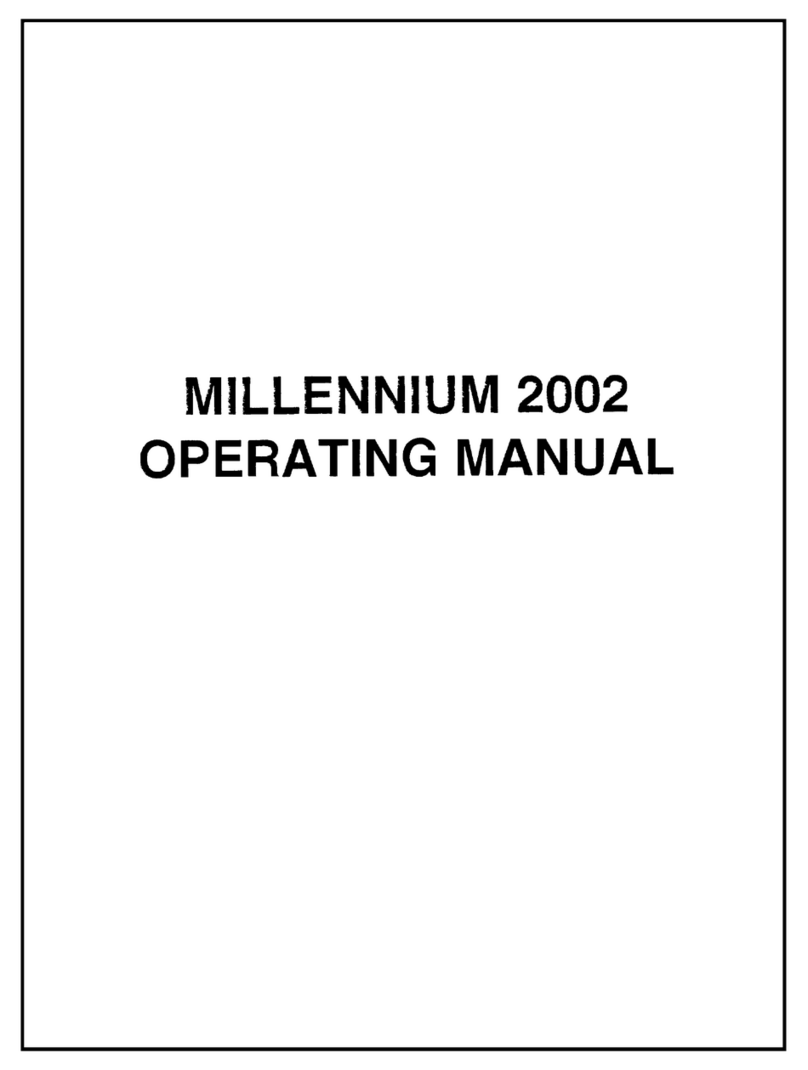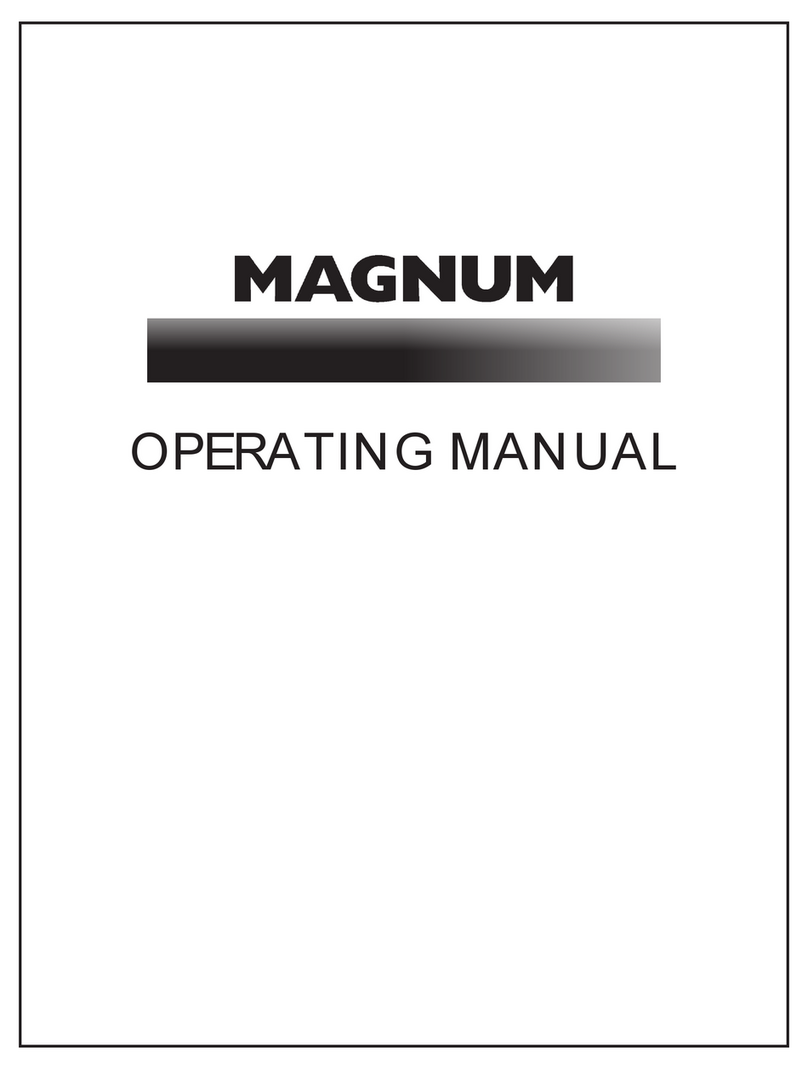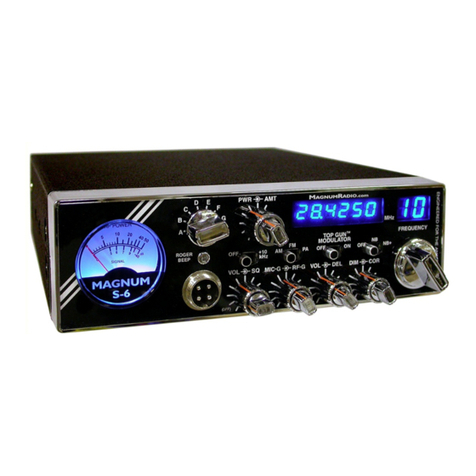
- 4 -
Aground-planeantenna providesgreater coverageand
is recommended for fixed station-to-mobile operation.
For point-to-point fixed station operation, a directional
beam antenna operates at greater distances even un-
der adverse conditions. A non-directional antenna
should be used in a mobile installation; a vertical whip
is best suited for this purpose. The base loaded whip
antenna normally provides effective communications.
For greater range and more reliable operation, a full
quarter wave whip may be used. Either of these an-
tennas use the metal vehicle body as a ground plane.
The Penetrator™ and Super Penetrator™ mobile an-
tennas, available from RF Limited, are the perfect an-
tennas for use with the Magnum DeltaForce. The
Penetrator™ and Super Penetrator™ feature power
ratingsof up to 3,500 watts PEP and bandpassratings
of 1.5 MHz, the widest bandpass of any mobile an-
tenna of its kind.
5. VSWR
After you have determined that the installation is cor-
rect and the radio is operational, it is important to de-
termine the antenna system’s VSWR (voltage stand-
ingwaveratio). Priorto takinganymeasurementsmake
sure the SWR bridge (meter) is in good working order
and is calibrated. To ensure your radio is performing
properlythe VSWR should never exceed 1.5 to 1. This
is critical due to the high level of gain developed in the
RFdeck. Nevertransmiton anyantenna system where
theVSWR exceeds 1.8 to 1. This will stress the output
stageand could destroy the RF transistors;thistypeof
misuse and failure is not covered under warranty.
FRONT PANEL CONTROLS
AND FUNCTIONS
Reference Front Panel Diagram on Page 5.
(1) POWER ON/OFF and VOLUME CONTROL
Turns the transceiver on and off, and adjusts the AF
gain, or volume.
(2) SQUELCH CONTROL
Used to eliminate background or “white” noise when
monitoringstrongsignals. Also used to activate SCAN
feature (see 14). To properly adjust squelch circuit,
slowly rotate the control clockwise until the received
audio disappears. Now turn the control slightly coun-
terclockwise - this will keep the threshold right on the
edge so you will not miss any incoming signals.
(3) MICROPHONE GAIN CONTROL
Increases or decreases the energy developed in the
microphoneamplifier circuit. Thegainincreases as the
controlis rotatedclockwise.For optimumsetting,press
thepush-to-talk switchonthe microphone(see23) and
speak in a constant tone into the microphone. A good
test tone is to say the word “four” in a long, drawn out
tone.While speaking,rotatethe micgaincontrol clock-
wise until the modulation LCD display reads +30(see
22).Next, rotate the control counterclockwise until the
+30 segment of the display starts to flicker.
(4) RF GAIN CONTROL
Adjusts the receiver sensitivity to both signals and
background noise. This affects the distance at which
a signal can be detected. Turning the control counter-
clockwisereduces the receiver sensitivity. Thisispar-
ticularly useful in areas where large volumes of traffic
(signals) are present.
(5) ROGER BEEP CONTROL
RBposition activates the endoftransmission, or roger
beep, tone. When activated a 1 kHz tone will auto-
maticallytransmit uponrelease ofPTT switch(see23).
Thisnotifiescontactsthat yourtransmission hasended
and you are ready to receive their signal. To turn off
the roger beep, put the switch in the S/RF position.
NOTE: In the RB position, the meter (see 13) mea-
sures S/RF.
SIGNAL STRENGTH / RF METER CONTROL
S/RF position activates the meter (see 13) to mea-
surereceive signal strength and transmitter RFoutput
power.
CALIBRATE CONTROL
CAL position activates the meter to calibrate for SWR
measuring.Tocalibrate for SWR, set the switch to the
CAL position, press the PTT switch (see 23) and ro-
tate the calibrate control (see 6) until the meter (see
13) needle lines up with the CAL mark on the far right
side of the meter. Once lined up, release the PTT.
Thetransceiver isnow ready tomeasure SWR.NOTE:
Whenfirst attempting tocalibratemake sure thetrans-
ceiver is in the AM mode (see 19). If it is not possible
to calibrate in AM, then switch to FM mode.
STANDING WAVE RATIO CONTROL
SWR position activates the meter to measure the
standing wave ratio of the transceiver and antenna
system. After the meter is calibrated, set the switch to
the SWR position and press the PTT switch (see 23).
The meter (see 13) will measure the SWR. For opti-
mumperformancetheSWR should be below 1.5 - the
first green segment on the SWR portion of the meter
indicates an acceptable standing wave ratio.
PUBLICADDRESS
PA position activates the public address amplifier. To
operate PA, select the PAposition and insert a public
address speaker or horn into the PAjack on the rear
panelof thetransceiver.
(6) CALIBRATE CONTROL
Rotate to calibrate the meter (see 13) for SWR mea-
surements. See instruction 5 for more information.






